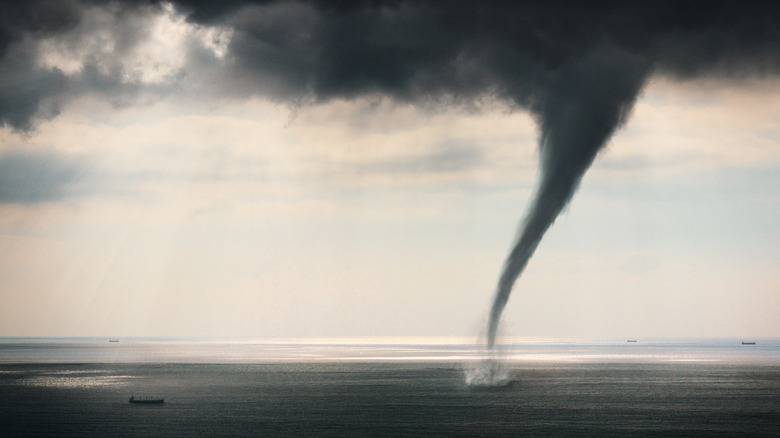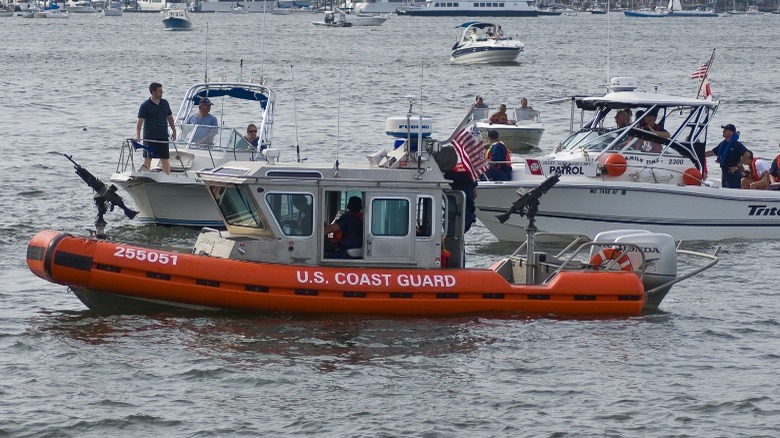Earlier this week, a luxury yacht belonging to British tech mogul Mike Lynch sank off the coast of Sicily following a storm. As of August 23, seven bodies have been recovered, with the Italian coastguard confirming its identity as that of Hannah Lynch, the 18-year-old daughter of the deceased billionaire. Ever since the tragic incident, multiple theories have been spread across the internet, trying to decipher why and how the 184-foot Bayesian superyacht became the victim of a freak storm.
Advertisement
According to The Telegraph, Lynch reportedly planned to sell the luxurious yacht back in March, but merely after a few months on the market, he withdrew the listing. In the wake of the accident, investigators are said to be eyeing an analysis of the ship’s keel, which was «partially elevated» and is being seen as a potential cause behind the tragedy.
Then there’s the «human error» side of the story. Inquiry will also be made into the crew’s response, specifically into their emergency protocol execution of closing the hatches. As of now, we don’t have any conclusive evidence of how the events unfolded, but experts have pushed a few theories into what was the likely cause behind the yacht capsizing.
Advertisement
A Waterspout could have caused the disaster

Koto_feja/Getty Images
According to Italian outlet La Repubblica, when authorities in the town of Termini Imerese interrogated 51-year-old James Cutfield, captain of the Bayesian superyacht, the New Zealander mentioned that he didn’t see the storm coming. The fact that the nearby vessels didn’t sink has raised suspicion that the cause was localized in nature. And given the erratic weather situation with storms, many are pointing fingers at waterspout, a phenomenon characterized by a whirling column of water and mist.
Advertisement
Tornadic waterspouts can either move from land to water bodies or form directly over water and are often tagged along by strong winds, hail, and occasionally lightning, as well. The Tornadic waterspouts that triggered the Bayesian tragedy are said to have emerged from the recent wave of storms that have hit the Italian coastline in recent days, causing severe damage in some areas.
The biggest danger posed by waterspouts is what experts refer to as the knock-down effect, where sufficiently strong winds or waves hit a ship with enough force that it damages the mast. The Bayesian had a mast standing at 75 meters, which could have played a crucial role here. «In this case, having a tall aluminum mast would not make it the safest port to be in case of a storm,» an expert in nautical design told The New York Times.
Advertisement
Strong winds are said to have pushed the mast, triggering the whole event in the first place. According to the report, witnesses saw «a small tornado-like column» during an unexpected storm that ended up sinking the Bayesian. The International Centre for Waterspout Research also claims to have recorded 18 waterspouts close to Italy, adding that one of them may have been responsible for the yacht accident.
It’s undetermined if human error contributed
The Bayesian’s mast was one of the biggest in the world, and questions are being raised as to whether it was partially responsible for the incident. However, the maker of the ship disagrees with the notion. In an interview with Sky News, Giovanni Costantino, the CEO of The Italian Sea Group, which owns Bayesian’s builder Perini Navi, told the outlet that the core structural components of such ships are «unsinkable bodies.»
Advertisement
He claimed that vessels like the Bayesian are «the safest in the most absolute sense,» further adding that there were no inherent issues with the construction and design of the superyacht. Costantino blamed the accident on human error, the executive said in an interview with local outlet Corriere Della Sera. He questioned why the crew was unaware of the approaching storm despite it being predictable. Noting that the whole turn of events was predictable, Costantino questioned the survivor testimonies, adding that claims of the ship capsizing within seconds don’t make sense, given the kind of failsafe measures built into the Bayesian. Following is a (translated) excerpt from the interview:
«I’m saying that, in fact, mistakes were made. Between the arrival of a storm and the loading of water there is a world. A series of activities had to be done to avoid finding ourselves in that situation. As the commander of the ship, I would have moved, but even if for some reason I had to stay there, I would have managed those weather conditions which, let’s face it, weren’t that crazy.»
Advertisement
Open doors and hatches could have quickened the pace
In his interview, Costantino, citing divers at the rescue spot, claimed that the hatch was certainly open and that there may have been other similar mistakes that allowed water to come inside.»I would have said that the boat got hit very hard by the wind, it was pinned over on its side. I imagine all the doors were open because it was hot, so there were enough hatches and doors open that it filled with water very quickly and sank like that,» Sam Jefferson, Editor of Sailing Today magazine, was quoted as saying by the DailyMail.
Advertisement
Nautical design professor at Milan Polytechnic University, Andrea Ratti, also shared similar concerns. «One or more portholes, windows or other openings may have been left open, broken or smashed by the waterspout, letting in water,» claims a Reuters report citing Ratti. Based on pictorial analysis, Sky News mentioned the presence of air conditions in rooms aboard the Bayesian, but some experts note that due to hot temperatures outside, guests may have left the windows and portholes open.
This could have played a role in speeding up the boat’s sinking process as it faced strong gusts of wind followed by an influx of water. Just four days before the Bayesian sank, the Mediterranean Sea recorded its highest-ever sea surface temperatures. According to Italian climate expert Luca Mercalli, who spoke to CNN, waters around the Sicilian coast were hotter than their usual levels.
Advertisement
The keel conundrum

Gary D Ercole/Getty
The final theory about the Bayesian’s sinking is linked to the keel, the structural beam that is responsible for maintaining a ship’s stability. The Bayesian featured a retractable keel system, so that it can be pulled up and allow the ship to dock in areas where the water levels are low. However, according to some experts, poor decision-making in the face of challenging weather may have contributed to the tragedy.
Advertisement
Now, the wreckage of the superyacht was discovered at a depth of around 50 meters, which is not shallow, and that means there was no need for the keel to be retracted. But according to certain reports, it was «partially retracted.» Investigators are now trying to establish details about the ship’s keel at the time of the event.
But it seems owing to the Bayesian’s engineering, it wouldn’t have played any key role in how the ship actually sank. «Even without the keel completely out, the ship is stable, and only a massive entry of water could have caused the sinking,» a spokesperson for the Italian Sea Group was quoted by the BBC. So far, no conclusive report has emerged, and we’ll have to wait until local investigations dig up evidence and establish how the events unfolded.
Advertisement